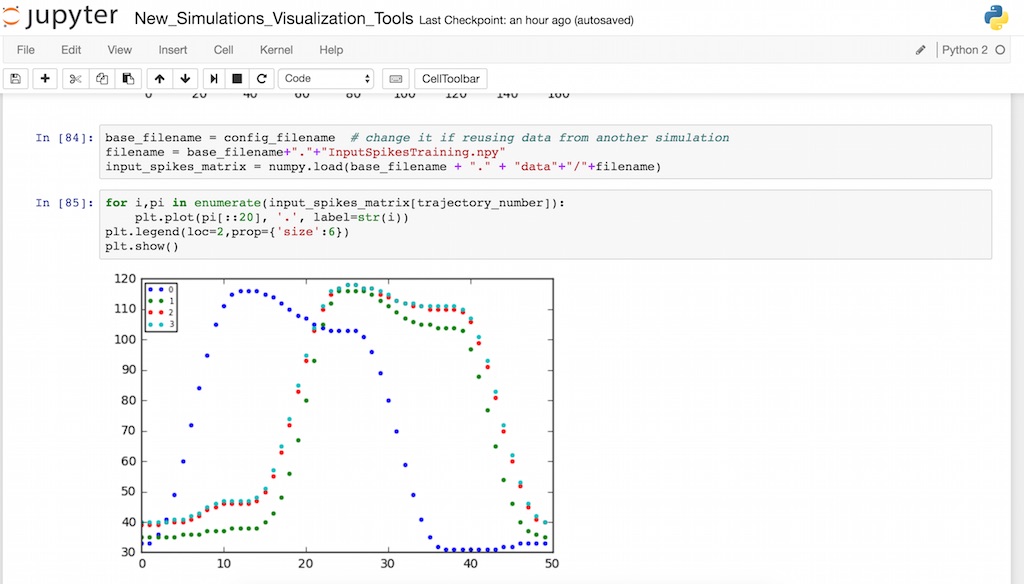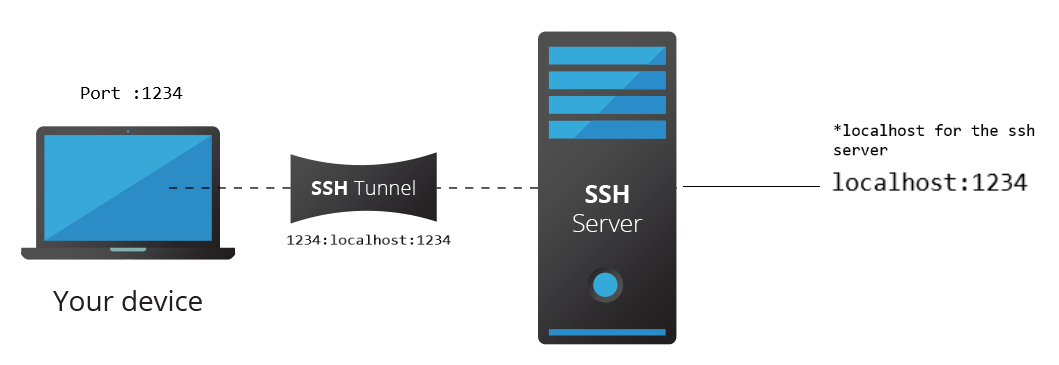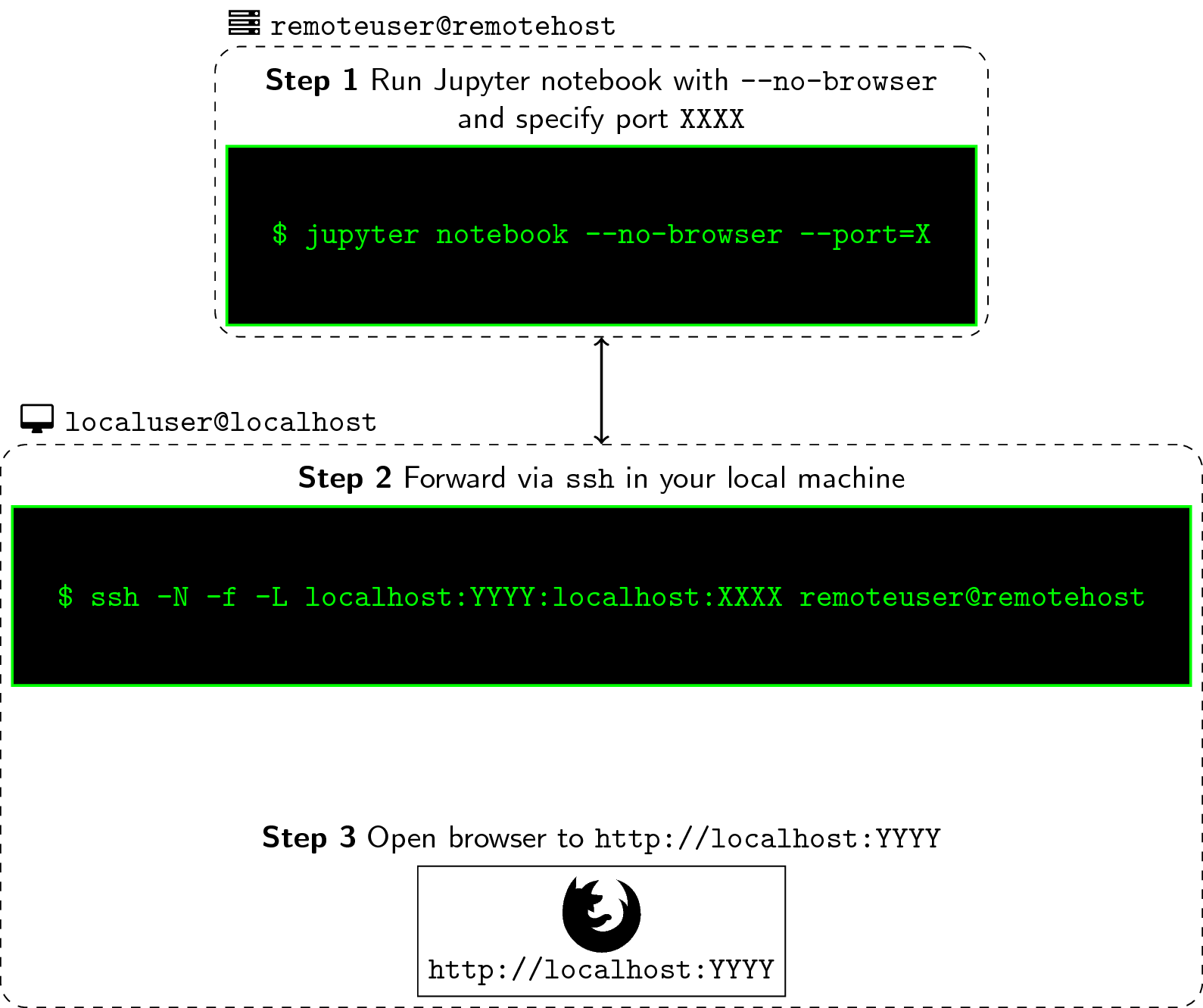Steps to Run Jupyter Notebook Remotely 1. Log-in to your remote machine the usual way you do.

How To Install Run And Connect To Jupyter Notebook On A Remote Server Digitalocean
If you are running a long task.

. You can specify the access port using the --port option. Dont forget to change jer and remote-machine to your user and machine name. The firewall must also allow connections from 127001 localhost on ports from 49152 to 65535.
This password will be used to access any Jupyter session running from this installation so pick something sensible. Map Local Port to Remote Port. In most cases this is simply done via an ssh command.
Run Notebook with Specified Port Number. On remote server In your browser. How to run Jupyter Notebooks on remote server SSH Using SSH Tunneling Using Reverse Proxy.
Steps to Run a Remote Jupyter Notebook. Now I am copying the server IP address along with port to open it in my local browser. Launch a Jupyter session on the remote server.
Secondly on the remote side go to the project directory and run Jupyter Notebook using the following command. Ssh -L xxxxlocalhostyyyy server. Run your Jupyter Notebook server in a screen or a tmux thus each time you close the connection with the remote server you just detach from the screen.
It will start the Jupyter Notebook on the specified port number. Jupyter notebook --no-browser --port8889 You must be wondering why no-browser is used here. If playback doesnt begin shortly try restarting your device.
You can create a Jupyter Notebook by running the Jupyter. In some cases I find myself needing to fire up a Jupyter notebook to draw quick-and-easy visualizations and short analyses. First you should connect to the remote server with.
To function correctly the firewall on the computer running the jupyter notebook server must be configured to allow connections from client machines on the access port cNotebookAppport set in jupyter_notebook_configpy to allow connections to the web interface. Userremoteip jupyter notebook --no-browser --port8890. On the remote server you should open your jupyter in a screen session it will make it persistent if you lose the connection to the server and resume it.
When youre logged into your remote via ssh you can. Now I want to run the notebook on the server and open in my browser. Create Blank New Jupyter Notebook command from the Command Palette CtrlShiftP or by creating a new.
Next time you want to access to it just tap in screen -r to attach the screen after you ssh to the remote server. Login to Remote Server. Ssh usernameremoteHostIp After connecting to it you should run docker container using.
On the remote machine start jupyter notebook from your current directory and specify the port. You can set a new password at any time on the remote server in exactly the same way. To disconnect manually and reconnect.
Change XXXX to the port of your choice. Jupyter notebook --no-browser --portXXXX Note. 17 hours agoIf you want to run an interactive Jupyter notebook on a remote server in PyCharm youll need to set up your Jupyter server configuration and remote Python interpreter.
Just a normal SSH login. It will keep on running in your remote server. For that after installation of all packages I do.
Replace with your username and server address. Ssh into the remote-machine. On the remote server.
Jupyter notebook --no-browser --portyyyy. Setup and run Jupyter notebook from a remote server by ssh In my research I usually work with remote servers to run deep learning models inside machines more powerful than my laptop. RunAccess Jupyter Notebook From Remote Server.
Usually the default is 8888. Optional On the remote-machine run tmux. Jupyter notebook --no-browser --port9999 On the local machine catch the forwarded port.
If your remote session gets disconnected tmux will keep the session running to reconnected run tmux attach. Docker run -it -p 80808888 -p 60066006 -v host waleedkamodern-deep-learning i am considering here port 8888 is of jupyter notebook port and 8080 is of remote server port. Once the console shows type the following.
Jupyter notebook --no-browser --port XXXX Optional. Ssh -NfL localhost9999localhost9999 your_user_nameremote_ip_address Go to. Start the notebook in no-browser mode and specify a port different from any other port on the server.
Start the notebook in tmux or screen so that you can later close the terminal while being able to run the notebook eg. First you have to ensure that Jupyter is installed both on the local system and the remote system. Jupyter notebook password Enter password.

How To Connect To Your Remote Ipython Jupyter Notebook From Your Local Windows Machine By Chris Fotache Medium

How To Install Run And Connect To Jupyter Notebook On A Remote Server Digitalocean

How To Run Jupyter Notebooks On Remote Server Ssh By Pranav Gajjewar Medium

Tips For Running Jupyter Notebook On Remote Server Just Chillin

Running A Jupyter Notebook From A Remote Server

How Can Connect Jupyter Notebook In Desired Environment In Anaconda In Server Computer By Using Putty Stack Overflow

Running A Jupyter Notebook Ipython On A Remote Server Ricardo S Place

Use Jupyter Notebook Remotely Pytraj 2 0 2 Dev0 Documentation
0 comments
Post a Comment